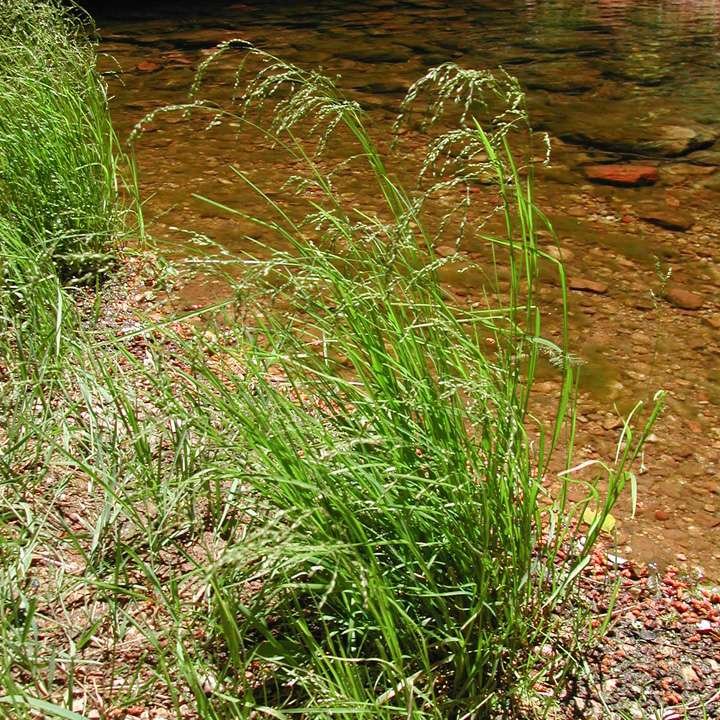Fowl Mannagrass
Glyceria striata
Family: Poaceae
Tufted perennial reaching two and a half feet tall. Can be distinguished by its habitat and by the delicate appearance of the panicle which appears June through September.
Shady or partly sunny spots with ample water, good grass for pond margins.
A moth, Elachista irrorata, uses this grass as its host plant. This grass is palatable to many domestic mammals like cattle, horse, and sheep. It is undesirable and largely ignored by white tailed deer. Geese are known to feed on the foliage along bodies of water, and the plant provides good cover for small animals.
Glyceria is from Greek glykys for sweet, referring to the edible grains, while striata means striped. There are 191 species of Glyceria common in wet places across Eurasia, Australia, North Africa, and the Americas.
Found along streams in wet soils from 6,000-9,000 ft. native to much of North America, from Alaska and northern Canada to northern Mexico.



